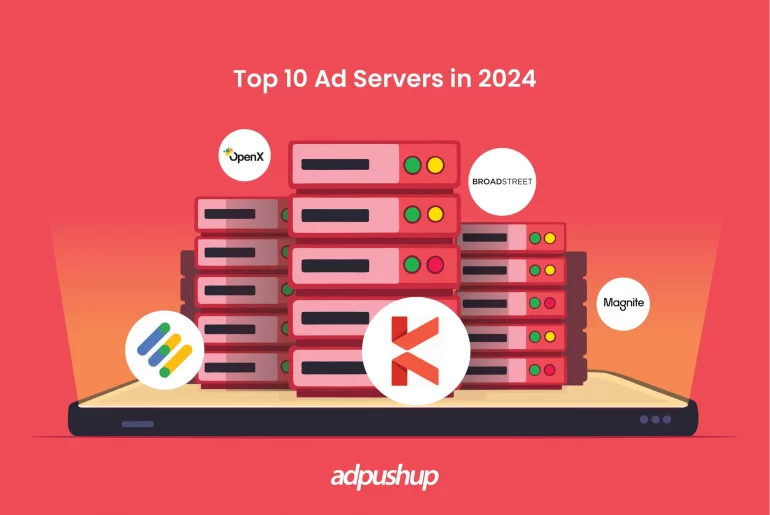An ad server is advertising software hosted on a server, used by publishers and ad networks to facilitate and manage ads. Check out our list of the top Ad Servers for publishers.
As we delve deeper into the ad monetization world, we come across many avenues that allow us to monetize our website or app advertisements better, be it ad exchanges, ad networks, etc. But first, you must choose an ad server. The majority of small-scale publishers generally start monetization by either integrating AdSense or signing up for an ad network.
But in order to really advance your ad income plan as a large-scale publisher, you must set up an ad server and fully take charge of your ad inventory.
Publishers may benefit from ad servers in numerous ways, and they make handling advertisements easy. They let you put up a number of ad units, encourage competition among advertisers, improve audience targeting, provide sophisticated reporting, and much more.
What is an Ad Server?
In the most simple terms possible, an ad server places advertisements online. It is a piece of advertising technology that plays a crucial role in the process of creating digital advertisements.
An advertising server maintains data about advertisements and sends them to one or more websites so that users may view them. Additionally, ad servers keep tabs on ad displays, clicks, and statistical statistics. On the basis of predetermined parameters, ad servers can also display specific advertising to website users.
In general, there are two sorts of ad server platforms: hosted versions, which are operated and maintained on a website owned and operated by an ad server , and self-hosted versions, which you install and maintain on your own server.
How do Ad Servers Work?
Delving into the history of ad servers, they first emerged in 1995 by a company named FocaLink Media Service. In that period, traditional advertising gradually moved to online advertising. The process of online advertising back then required manual efforts and multiple human interventions. The traditional process of managing the ad operations was time-consuming as it required direct deals and regular communications through both parties – Publishers and Advertisers. And as the online content augmented, so did the need for publishers to monetize their content more efficiently.
Since the inception of ad servers, multiple operations of online ad serving have become streamlined, thanks to automation. Here’s how ad servers work:
- A user visits the website or an app.
Once the user arrives on the website/app, an ad request is sent to the publishers. - The ad request contains advertising details such as geolocation, users’ device type, and other targeting criteria.
- After receiving the ad request, ad servers start searching for the most appropriate ad placement for the required criteria.
Once the criteria are matched, the ad is finally served to the publishers’ website/app.
That said, let’s now get to the heart of the matter and take a look at the list of ad servers. These top ad servers include both hosted ad servers, and self hosted ad servers.
Why do Publishers Need Ad Servers?
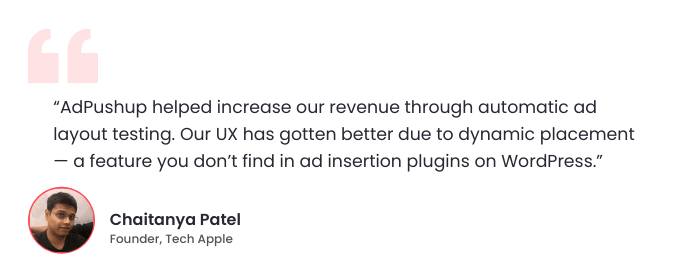
Technological Support
As the advertising world is advancing, new ad approaches and formats of advertising are making their way. To keep up with the latest advancements, publishers need the technology, which is an “Ad Server”. These platforms offer a range of features, including centralized ad inventory management, precise audience targeting, real-time bidding for ad impressions, and much more.
Contextual Advertising
Advertising success lies in delivering relevant ads to the users, something they are already in need of. Ad servers make it possible with their automation technology. They align the ads supply based on the website content with the demand, which enables relevant ad serving, leading to higher conversions.
Ad Rotation Flexibility
Ad rotation is a technique used to prevent users from becoming desensitized to online advertisements. In other words, it helps publishers deal with the banner blindness. Ad servers play a crucial role in facilitating ad rotation. These platforms enable publishers to easily manage and update their ad inventory, allowing for seamless transitions between different ads.
Tracking Tools
Delivering accurate and consistent measurements to advertisers, ensuring they can trust the data they receive. This enables them to optimize their campaigns effectively and maximize their return on investment. By providing transparent and trustworthy reporting, you can build stronger relationships with advertisers and increase your ad revenue potential.
So these were a few of the primary features offered by top ad servers out there. There can be a lot more depending on the type of ad server you choose to go with.
The List of Top 10 Ad Servers for Publishers
While there are many ad servers available in the market, let’s discuss the 10 top ad servers for advertisers and publishers in this post:
1. Google Ad Manager
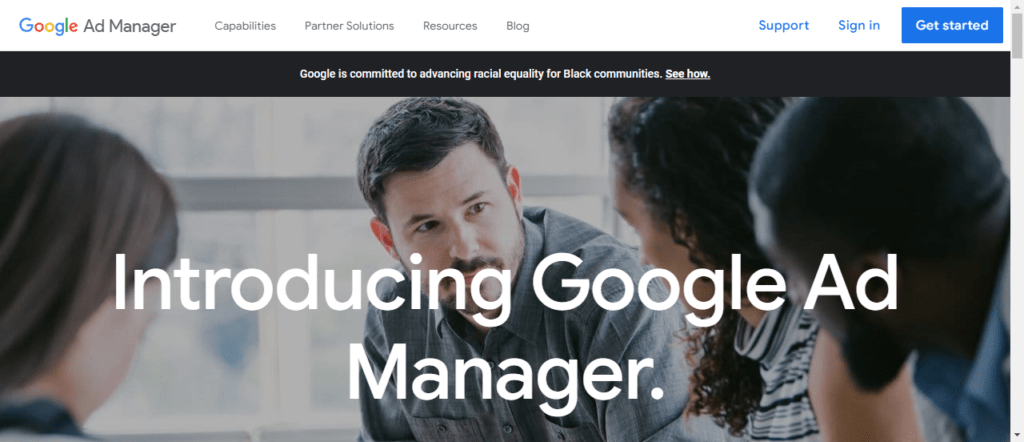
One of the best ad servers and extensively utilized ad servers available for publishers is Google Ad Manager, formerly known as Doubleclick for Publishers, until 2018. An extensive range of features is offered by Google Ad Manager, including simple Google AdX and Adsense integration, thorough reporting, malware detection, an easy-to-use interface, frequency capping, etc.
Most crucially, those publishers whose total monthly impressions do not go beyond 90–200 million may utilize Google Ad Manager for free (depending on the GEO). For all levels of publishers, it is a highly alluring solution.
2. Kevel (Adzerk)

Second in the list, Kevel is one of the best ad servers for publishers. It is completely customizable, and the server-side ad server can be designed, built, and launched in a matter of weeks, thanks to the Kevel API suite. Kevel offers the ability to manage native ad spaces, internal promotions, sponsored listings, etc. They are a reputable company with clients like Ticketmaster, Yelp, Strava, and Mozilla, and their plans start at $3K per month.
3. OpenX
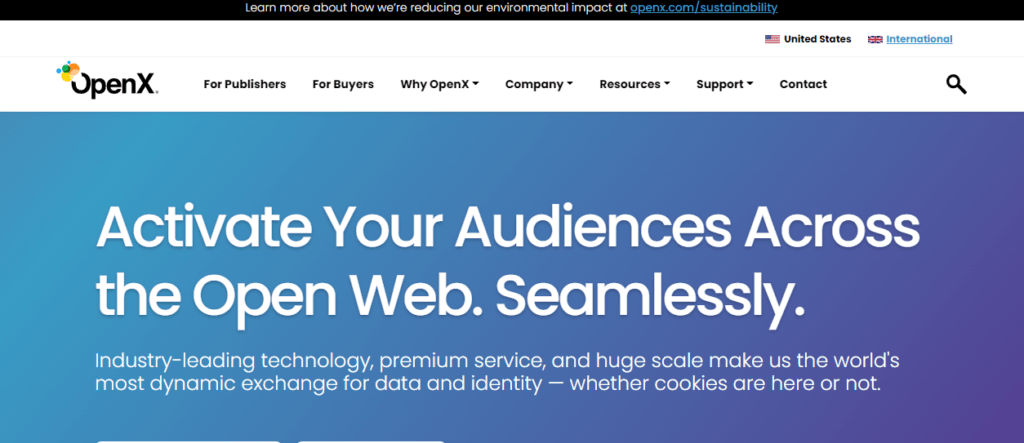
OpenX is another one of the top ad server solutions technology company founded in 2008. It makes its mark among its rivals as one of the most trustworthy and respected ones. OpenX runs an SSP and a proprietary ad exchange in addition to a hosted ad server. Additionally, it provides OpenAudience, a platform for audience management, to its publishers.
A good option for bigger publishers is OpenX. Although its expenses are more than the industry standard, the fact that it is utilized by well-known organizations like The New York Times, Hearst, and Daily Mail speaks for itself.
4. Broadstreet Ad Server
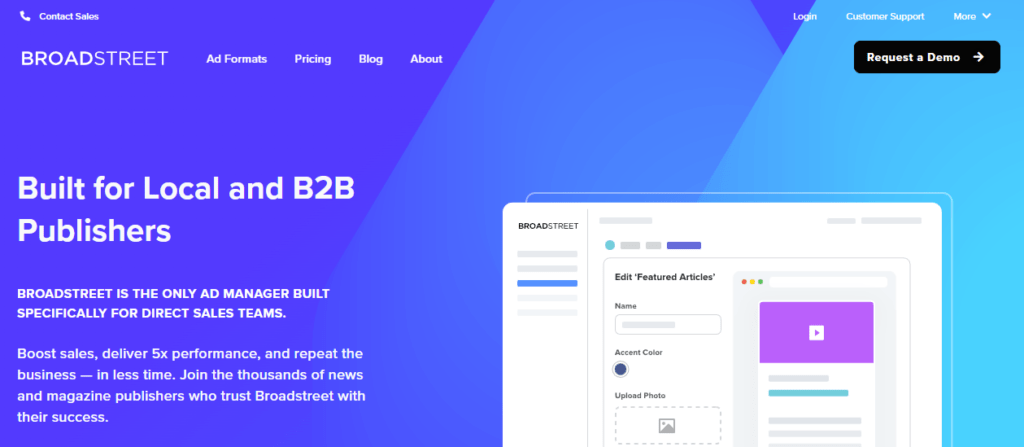
The original purpose of the Broadstreet advertising server was to meet the ad-serving requirements of regional news and magazine websites. The Broadstreet ad server has a straightforward user interface and is created with non-technical users in mind.
Additionally, they deliver educated and efficient technical assistance. Broadstreet is an excellent ad serving platform for SMEs since it is cheaply priced, integrates with WordPress, and offers email newsletters.
The Jotform Affiliate Program offers a generous recurring commission structure, a dedicated partner dashboard, marketing materials, and a dedicated account manager who focuses on your success. The commission rates start at 30% and can be increased up to 50% depending on your performance.
Before we move further, we’d like to do a little self-plug about ourselves too.
We’re currently offering publishers an exclusive, limited-time opportunity to publishers! When you switch to us, we’ll match your current earnings and forecasted Q4 monthly revenue. On top of that, we will waive all revenue share for the first 15 days. Sign up today, and let us help you hit your Q4 revenue peak.
5. Magnite
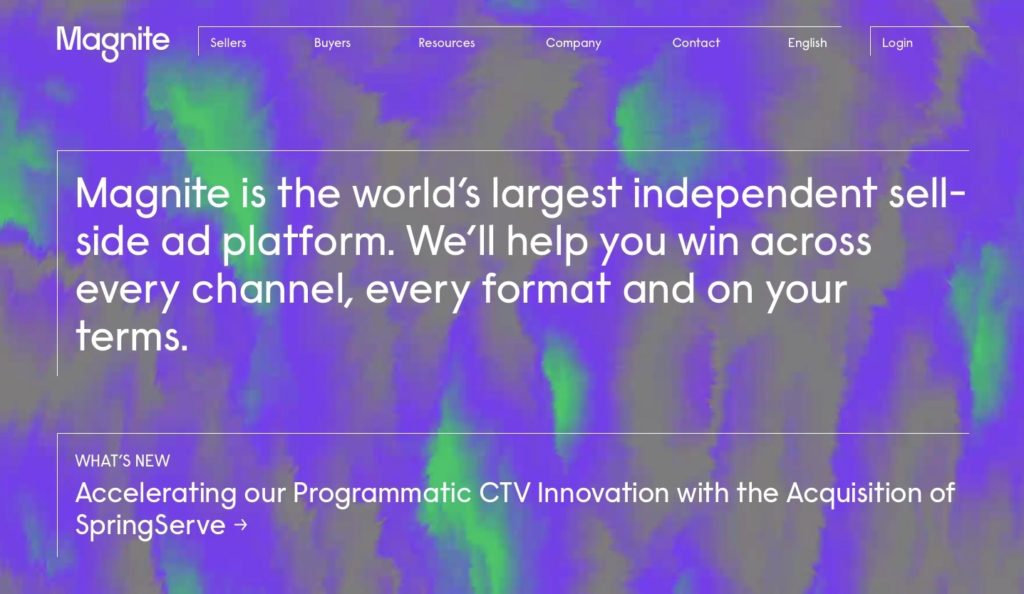
Magnite (Rubicon Project before 2020) was the industry leader in ad serving when it was established in 2007. One of the largest sell-side advertising firms in the world today is Magnite. Every existing format and channel, including Video ads, CTV, Display, Mobile, DOOH, and Audio, is supported by the Magnite.
Publishers may effectively manage their ad inventory while establishing direct connections with leading advertisers thanks to Magnite’s self-serve ad server. In addition to the open auction, Magnite’s sell-side partners have access to programmatic guaranteed transactions and a private marketplace.
A standout aspect of Magnite’s offering to publishers is its sophisticated audience management toolkit, which offers a practical approach to creating, examining, and engaging audiences using first-party data from publishers.
6. AdButler
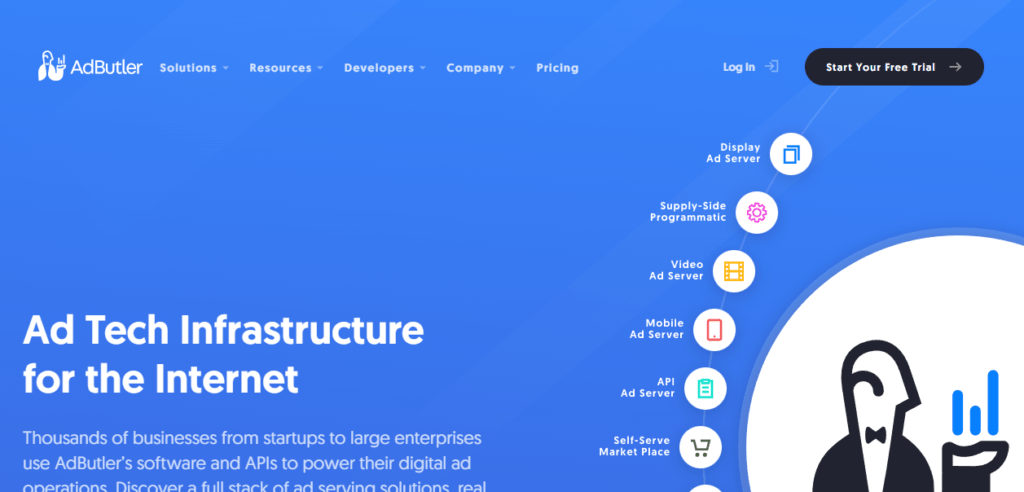
A technological business called AdButler has been active in the ad tech sector for more than 20 years. In addition to a self-serve marketplace, a programmatic SSP, and a full-stack platform appropriate for all ad formats, it also provides.
The flexible price options offered by AdButler start at $109 and depend on the number of ad requests. Other advantages include premium live support, sophisticated targeting, and solution customization. AdButler is a very competitive player since it is ideal for publishers of all categories and levels.
7. Equativ
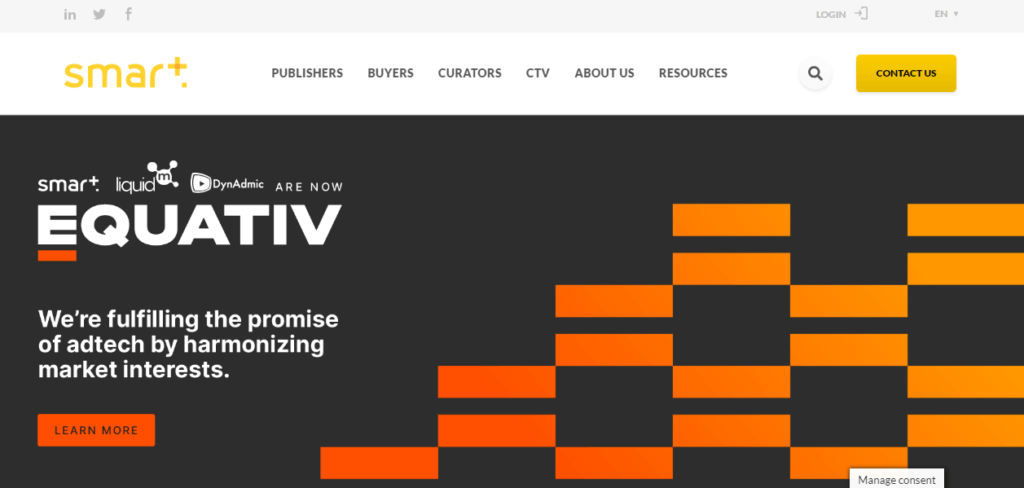
Another one of the top ad servers in the list is Equativ. With more than ten years of expertise, Smart provides both sell-side and buy-side clients with a range of technology solutions.
The sophisticated algorithms of Smart Ad Server, like a unified auction, can be advantageous to publishers. It also has other capabilities like direct access to leading demand sources, such as Smart’s own DSPs (LiquidM and DynAdmic), real-time forecasting, sophisticated & cookie-less targeting, unified reporting, etc.
The following traffic kinds and formats are supported by Smart: web, mobile, CTV, display, and video. It also offers native integration of its patented Smart SSP into the ad server with a great degree of flexibility since it runs a complete programmatic environment.
8. Epom Ad Server
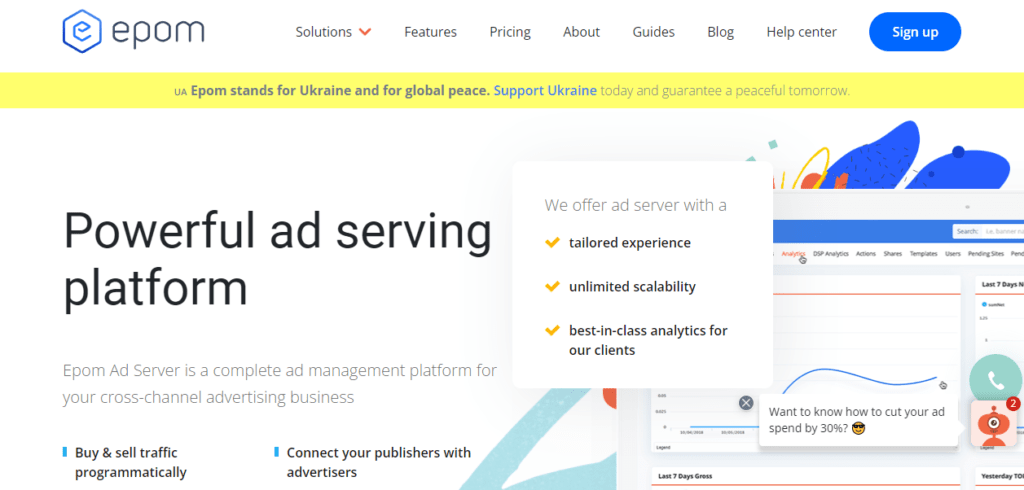
As a whole cross-channel advertising platform, Epom positions itself. Publishers will benefit from it as well, even though it is marketed as a solution for ad networks. The white-label ad server from Epom is completely customizable and offers seamless setup and interaction with third-party systems.
The lowest package starts at $250/month and includes live 24/7 assistance, a vast library of ad formats, precise targeting, integration with more than 60 DSPs, and automated optimizations.
9. Revive (Self-Hosted)
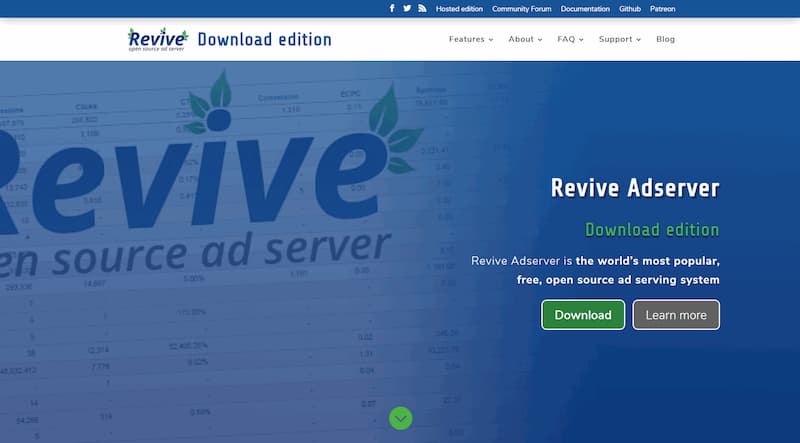
The first and most significant feature of Revive is that it is completely free. Additionally, it is the most widely used open-source and self-hosted ad-serving solution, making it one of the top ad servers. Numerous targeting options, thorough reporting, AdSense connection, etc., are included. In contrast, Revive only provides help through its community website for users.
In addition, the adoption and upkeep of this self-hosted technology need publishers to have a particular level of technical expertise. Additionally, it uses up a sizable amount of a publisher’s server resources.
So for a tech-savvy publisher willing to devote time and resources to ad serving, Revive would be a wonderful option. Revive now provides a hosted option that starts at $10 per month in addition to the self-hosted free version.
10. OIO Publisher (Self-Hosted)
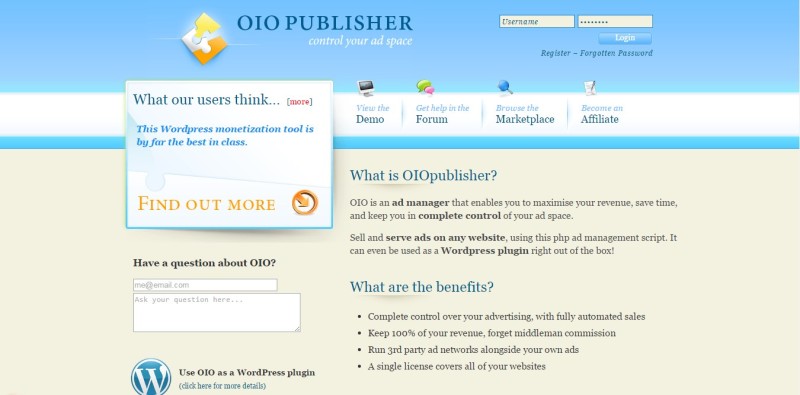
Last in our ad servers list, OIOPublisher is an ad management software plug-in for WordPress. OIO Publisher is a widely used PHP ad management script that enables users to sell and display advertisements on any website.
The cost is quite fair for what you receive. You are given access to their online marketplace, where you may sell any unsold ad space. For this, either standalone software or a WordPress plugin may be installed. As new versions are published, updating is simple. Talking about support services, assistance is offered via email and forums only. There isn’t any telephone or priority support offered. OIOPublisher can be one of the best options for you if all you need is a basic ad server.
How to Choose an Ad Server: Top 4 Factors
Technical Compatability
Before anything else, publishers need to decide whether they want to go hosted or self-hosted ad servers.
1. Self-hosted Ad Server
Both ad-serving platforms operate entirely differently. Self-hosted ad servers, also known as open-source ad servers, are free to use. Using open-source ad servers requires installing a script, which can be tweaked or customized as per publishers’/advertisers’ needs. However, it requires extensive technical expertise.
For instance, to handle high traffic volume, such as 100 million monthly requests, you may need a dedicated team of engineers. This could involve maintaining uptime, implementing updates, and troubleshooting issues.
Hosted Ad Server
Hosted ad servers are online platforms that handle the complex tasks of ad serving, freeing publishers and advertisers from the burden of managing their own infrastructure. These platforms typically employ large teams of experts who oversee ad delivery and provide comprehensive support. Unlike self-hosted ad servers, there is no server and maintenance cost. There’s just one one-time fee, which can be charged and scaled depending on the pricing plan.
2. Efficiency
By efficiency, we mean the processing power in terms of ad delivery. So make sure you choose an ad server that is quicker and more reliable. Sload times can lead to missed ad opportunities and lower engagement. Choose an ad server that can deliver your ads quickly and efficiently, ensuring that the right ad reaches the right user at the right time. With quick load times come more impressions and higher click-through rates. Thus, efficiency should be one of the critical factors to look for when weighing ad servers or ad-serving platforms.
3. Versatility
Versatility here refers to the type of ads an ad server can support. If you are currently using basic ad types, such as banner ads, and your goal is to scale both your website and ad revenue, you might need to test and experiment with different ad types. Thus, make sure your ad server supports different ads, such as video ads, rich media ads, interactive ads, etc.
Even if it doesn’t seem like an urgent requirement now, you may need to expand your ad formats to reach your revenue goals in the future.
4. Easy Integration with Your Ad Stack
When transitioning to a new ad server, it’s crucial to maintain your existing ad stack configuration. A seamless integration ensures minimal disruption and allows you to leverage your familiar tools and platforms.
Consider ad servers that are compatible with your current ad tech ecosystem. This compatibility will simplify the migration process and help you avoid unnecessary complications.
Key Takeaways
- Choosing top ad servers requires thorough research. The key factors publishers should consider while choosing an ad server are – technical compatability, versatility, Efficiency, and integration setup with your current ad stack.
- There are multiple reasons why publishers need ad servers. This includes technological support, better advertising capabilities, ad Rotation flexibility, and a lot more features.
- Top ad servers currently in the adtech industry are Google Ad Manager, Epom Ad Server, Magnite, OpenX, Kevel, etc.
- Lastly, finding out which ad server is best for you will depend on how your brand is positioned in the market, your financial situation, and the features your company needs from its ad platforms.
Before you leave, we’d like to do a little self plug about ourselves too. Take a look at what AdPushup does and why we’re hand-picked by Google as a certified publishing partner.
AdPushup is a Google Certified Publishing Partner. Over the years, we have helped web publishers sustainably increase their ad CTRs, CPMs, and overall revenues without compromising on UX.
Got a minute? Take a look at how we delivered a 534% ad revenue uplift in 6 Months for CCNA7. If you want to learn how our technology can do the same for you, go ahead and request a demo.
Frequently Asked Questions
A first-party ad server offers the following features:
i. An advertiser’s campaigns on a publisher’s website are managed using first-party ad servers by the publisher’s ads department.
ii. Publishers can sell direct ad slots to advertisers using first-party ad servers.
iii. In the absence of a predefined campaign, they can also decide what creative assets should be displayed in a particular ad slot.
Publishers and advertisers exchanged direct, manual messages early on in the history of online advertising. Publishers soon realized they needed to create advertising solutions that streamlined advertiser campaigns as the digital ecosystem grew. This need led to the creation of first-party ad servers.
One of the most challenging aspects of digital marketing is managing campaigns across multiple formats and publishers. Ad management and reporting should be done from a central point in order to efficiently run your ads on multiple websites. Ad servers play a crucial role in this process.
An example of an ad server is Google Ad Manager, which allows publishers to manage and optimize ad campaigns across various websites and apps. It provides tools for targeting, tracking, and reporting ad performance to maximize revenue.
An ad server is an integral part of digital ad serving across different ad platforms. It allows for efficient, cost-effective, and targeted ad serving, which helps both publishers and advertisers meet their goals. Not only that, but ad-serving companies also provide both parties with the music they require to gauge their advertising efforts.
If you’re a new publisher, opting for the hosted server would make more sense since it does not require complex technical expertise. Moreover, make sure the “publisher ad server” you’re choosing offers cross-browser assistance and real-time analytics support.
As the name suggests, a video ad server is any server that can host video ads. Though there are many ad servers out there, not all of them support video ads format. Thus, there exist ad servers that are just designed to serve video ads, which are called video ad servers.
As mentioned earlier, ad server is a piece of technology that is used by publishers, advertisers, and ad agencies to manage their ad operations. Examples of ad servers include aforementioned platforms like Google Ad Manager, Kevel, OpenX, Magnite, and more.

Deepak has a keen eye for detail and a deep understanding of the ad tech landscape. Whether it’s through in-depth articles, thought-provoking insights, or compelling storytelling, he’s dedicated to helping people navigate the complex world of ad tech with the simplicity of his words.
